|
Pakistan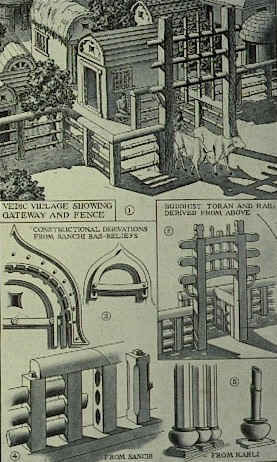 Modern Pakistan didn't spring into existence overnight. It took millennia of determined effort to transform a lovely piece of real estate into the terrorist-infested, poverty-stricken, nuclear-armed, corrupt-dictatorship shithole that it is today.
Modern Pakistan didn't spring into existence overnight. It took millennia of determined effort to transform a lovely piece of real estate into the terrorist-infested, poverty-stricken, nuclear-armed, corrupt-dictatorship shithole that it is today.In second and third millennia B.C., India and Pakistan were the home of the Indus Valley civilization, a kingdom with wealth and culture rivaling or even surpassing ancient Egypt and Mesopotamia. The Indus Valley had vast cities, huge agricultural centers, palaces, baths, and beautiful temples. Its towns and cities had large houses and advanced sewer systems. Their intricate heiroglyphic-style language still baffles archaeologists today. Artisans created works in clay and bronze, and they etched elaborate designs on copper, porcelain and precious stones. The Vedic religion of the people was a precursor to Hinduism, and its surviving teachings are valued even today for their insights into medicine and herbalism. Then, in about 1500 B.C., the entire civilization was obliterated by the Aryans (the originals, no relation to the various Nazi wannabes running around in the 20th century). The good times were over. Permanently. The Aryans were conquered by the Persians, the Persians were conquered by Alexander the Great, Alexander was succeeded by the Selucids, the Selucids were conquered by the Mauryas, the Mauryas were overthrown by the Bactrians, the Bactrians were conquered by the Scythians, the Scythians were conquered by the Parthians, the Parthians were ousted by the Kushans, the Kushans were overthrown by Muslim Arabs, the Arabs were conquered by the Turks, the Turks were eventually ousted by the British, the British were ousted by the Persians, the Persians were conquered by the Afghans, and the Afghans were ousted by the Sikhs. As you can see, whatever indigenous culture ever existed in Pakistan has been long since obliterated. Pakistan's primary distinction for the last 3,500 years or so has been the frequency and viciousness of the wars fought over it.
In its aftermath, the "native" people split along religious lines. The major religions battling for dominance were Muslims, Hindus and the Sikhs (Sikhism is an ascetic mutant hybrid of Hinduism and mystical Islam). For a couple of decades, Muslims and Hindus tried to coexist in the region, but in 1930, the Muslim community embraced the idea of an Islamic state, which they dubbed Pakistan. In 1947, the new nation won independence from both the British and the Indians. The British left the new Pakistani regime in the lurch, without infrastructure or support. The result was widespread violence and religious war between Muslims and Hindus, commingled with a political war between India and Pakistan. Half a million people died in the fighting. Millions of Muslims fled India for Pakistan and millions more Hindus fled Pakistan for India. For the next 10 years or so, the nation was rocked by assassinations and revolts, and Pakistan was largely governed under martial law. Things just kept getting worse, as continuing revolutionary fighting combined with economic collapse and political corruption. A military coup in the late 1950s stabilized things somewhat, and the dictatorship was ratified under the facade of constitutional law in the 1960s, followed by another bout of martial law, followed by another pretend constitution, followed by... Well, you get the picture.
In the mid-1960s, the two nations began fighting over Kashmir, and they never stopped. In 1972, Zulfikar Ali Bhutto took over. A wealthy (by Pakistani standards) and popular (by Pakistani standards) politician, he rose to power as the result of a civil war (by anyone else's standards but just business as usual by Pakistani standards). He managed to unite the company under yet another constitution, but then (and I bet you didn't see this coming) he was overthrown by a military coup and executed. In the 1980s, Pakistan finally found its mission in life. Rather than spend all its time embroiled in internecine bloodletting, it could serve as a facilitator for other countries involved in internecine bloodletting. The United States adopted Pakistan as a staging area for its proxy war against the Soviet Union in Afghanistan. The U.S. funneled money and arms through the border between Pakistan and Afghanistan, lavishing aid on Pakistan in return. The U.S. gently pressured the military dictator of the moment to implement democratic reforms, a process which was greatly assisted by said dictator's death in a convenient and never satisfactorily explained plane crash in 1988.
The presence of an archterrorist in the country wasn't an accident. The U.S. Central Intelligence Agency had provided copious arms, training and weaponry to Arab "volunteer" fighters waging jihad against the Soviets in Afghanistan, using the largely unmonitored border between Pakistan and Afghanistan as a conduit. The fighters used the anarchic mountainous regions of northern Pakistan both for travel and training, and the operation had a massive presence in the country. When the war ended, the volunteers kept right at it. In 1988, Osama bin Laden had formed al Qaeda in Peshawar, Pakistan, and the Saudi millionaire had created a financial and logistical infrastructure that riddled the nation. al Qaeda also recruited and trained native Pakistanis, like Yousef and his uncle Khalid Shaikh Mohammed, to wage jihad against whomever bin Laden decreed to be the enemy of the moment.
In 1999, a new coup overthrew the old coup, installing current President Pervez Musharraf to lead yet another iteration of Pakistan's governmental cycle. Musharraf bought himself a couple extra years after the September 11 attack on America, by making a show of supporting U.S. action against al Qaeda and Afghanistan. Despite the hazards associated with the Afghan war, Pakistan and India continued to face-off over Kashmir, leading to tense nuclear-fraught tensions in 2002, which subsided without resolution going into 2003. Musharraf continued to make a show of fighting terrorism, even amid persistent rumors that bin Laden was hiding in the country (rumors which continue to the present day). Although there is little sign that al Qaeda's operations in Pakistan have slowed, the process has led to a few major arrests. The arrest of Khalid Shaikh Mohammed in March 2003 was the high point of this effort, undercut only slightly by a sudden explosion of conspiracy theories in the Pakistani press suggesting that news of the arrest was bogus or mistaken, leading to a subsequent cover-up by the Musharraf regime. There are only two real outstanding issues for Pakistan's future. First, how long until the next coup? And second, will the cycle of constant revolution end with a couple of 50-megaton warheads lobbed over the border from India? While waiting for radioactive death to fall from the skies, the citizens of Pakistan can look forward to continued incidences of raw sewage in their drinking water, an infant mortality rate more than 10 times greater than the U.S., a literacy rate of less than half the adult population, an average annual income around $2,100, widespread heroin trafficking and a booming slave trade. It's all the Aryan's fault, if you ask me.
See Also
Timeline
|
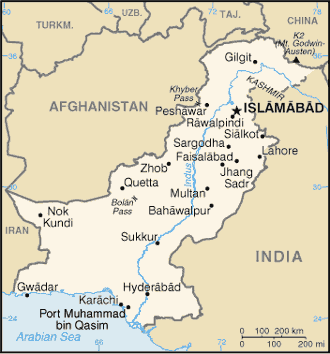 After the Sikhs took over, the modern history of the country truly began. Starting in the mid-19th century, the
After the Sikhs took over, the modern history of the country truly began. Starting in the mid-19th century, the 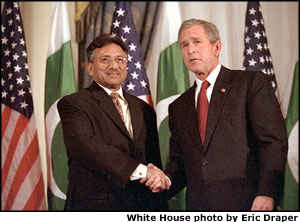 At the time of the original split between India and Pakistan, certain matters had been "temporarily" postponed for later discussion. One of these issues involved a region known as Kashmir. It was unclear from the start whether Kashmir was part of India or part of Pakistan, and it remains unclear to this day.
At the time of the original split between India and Pakistan, certain matters had been "temporarily" postponed for later discussion. One of these issues involved a region known as Kashmir. It was unclear from the start whether Kashmir was part of India or part of Pakistan, and it remains unclear to this day. 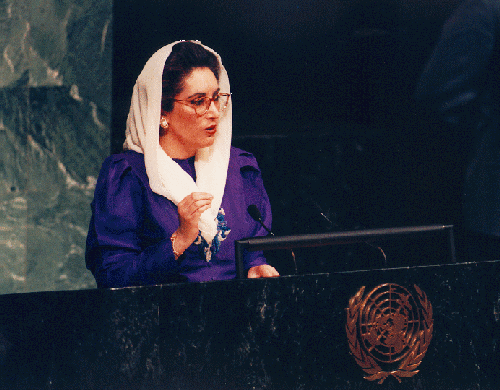 The dictator's convenient and never satisfactorily explained death cleared the way for Benazir Bhutto to take power. Conveniently enough, the daughter of Z.A. Bhutto proved to be a strong U.S. ally, after the obligatory coup and new government. As a woman running an Islamic state, Bhutto had problems. Among the many assassins targeting her was one
The dictator's convenient and never satisfactorily explained death cleared the way for Benazir Bhutto to take power. Conveniently enough, the daughter of Z.A. Bhutto proved to be a strong U.S. ally, after the obligatory coup and new government. As a woman running an Islamic state, Bhutto had problems. Among the many assassins targeting her was one 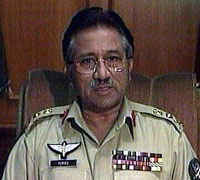 When Bhutto was deposed for a second time, yet another military coup took power in Pakistan. The new regime faced a sudden threat from India, which detonated a
When Bhutto was deposed for a second time, yet another military coup took power in Pakistan. The new regime faced a sudden threat from India, which detonated a